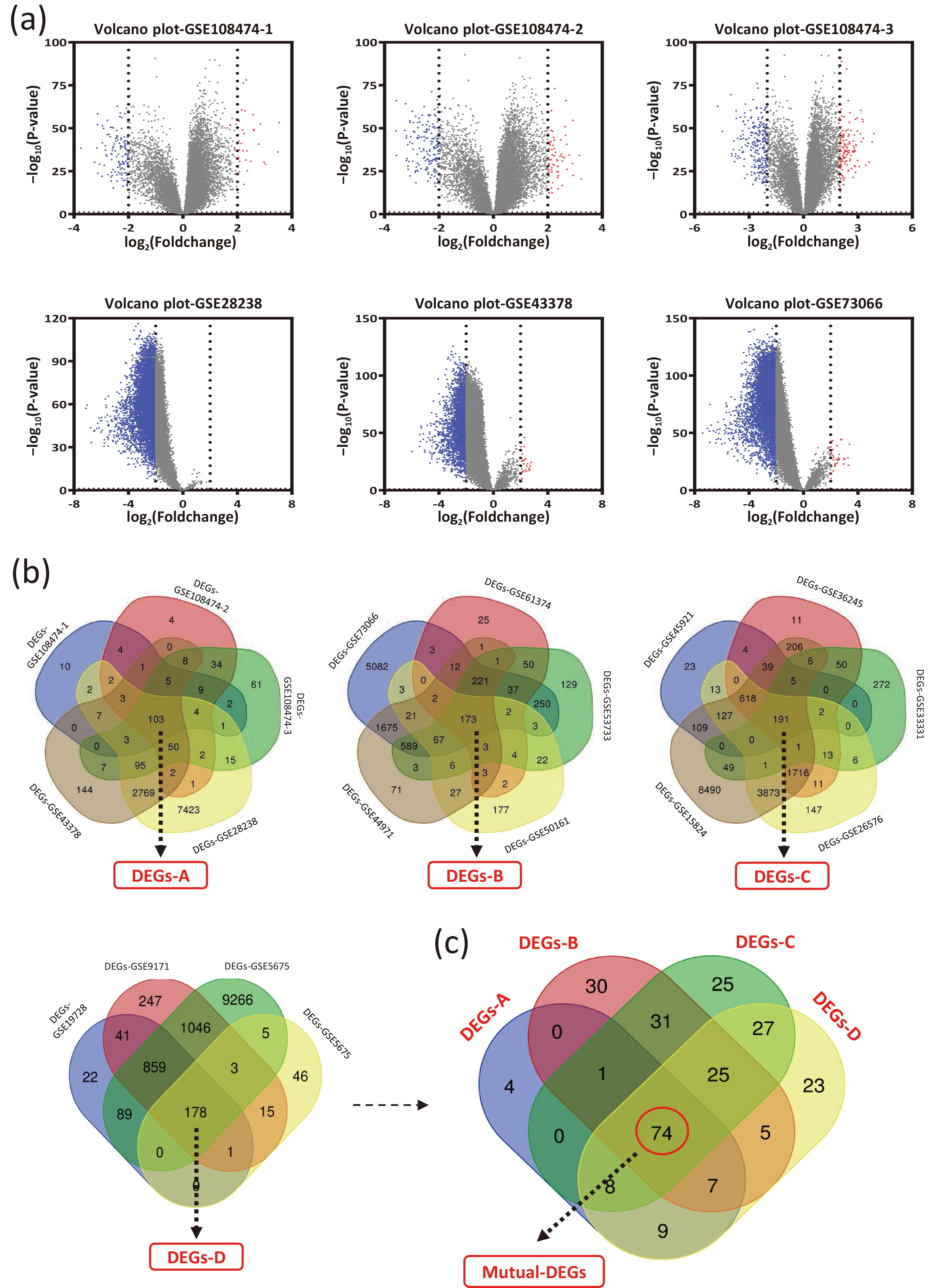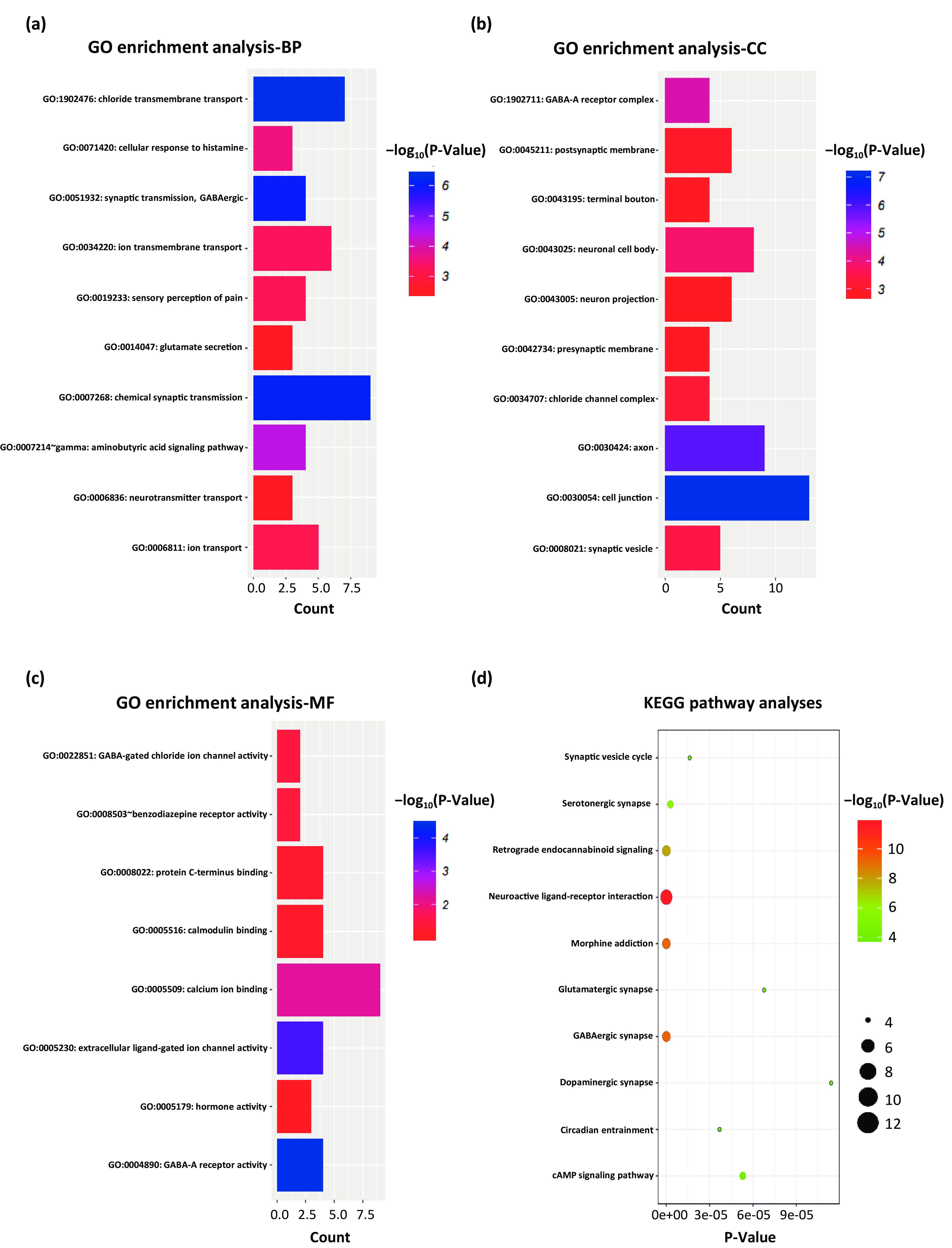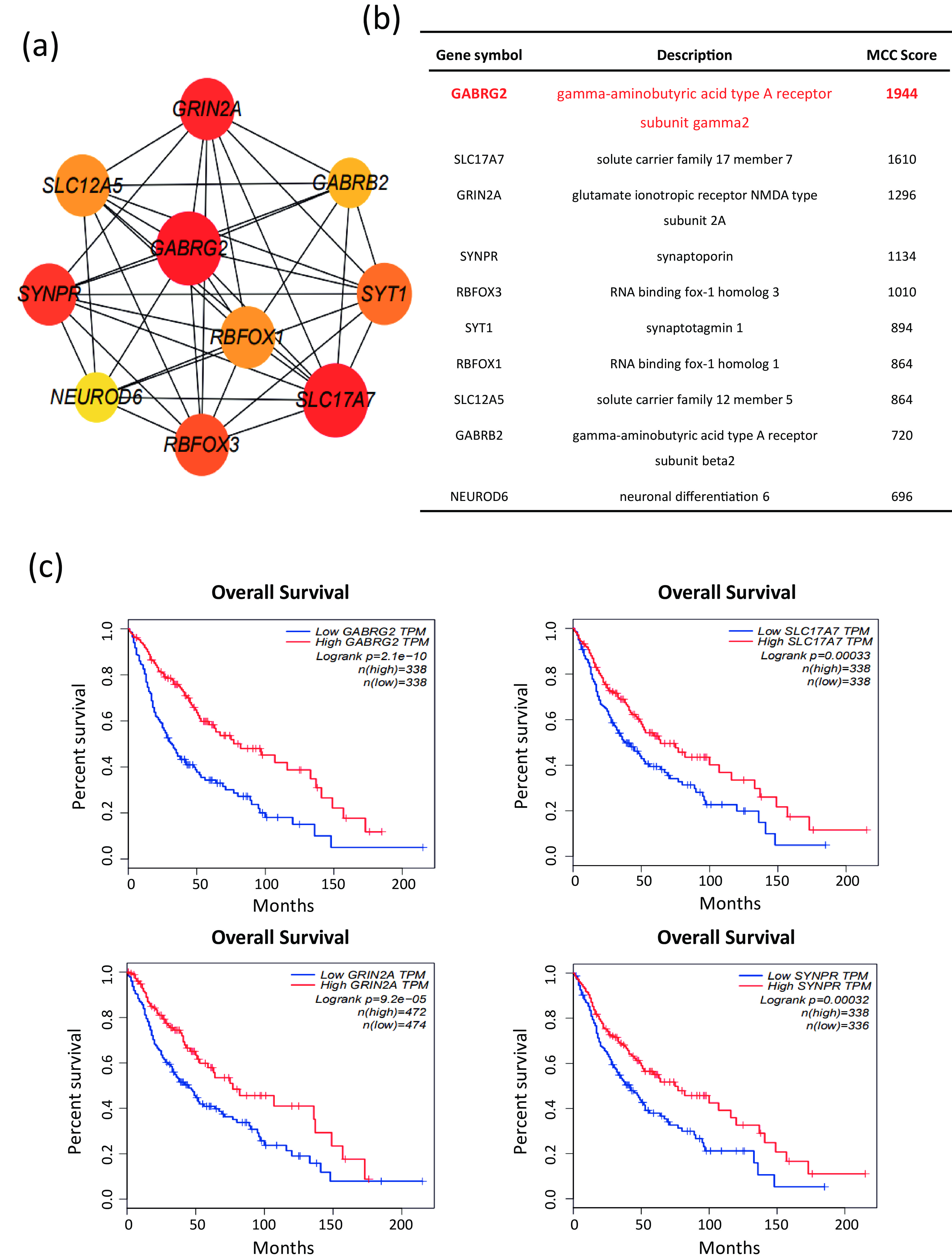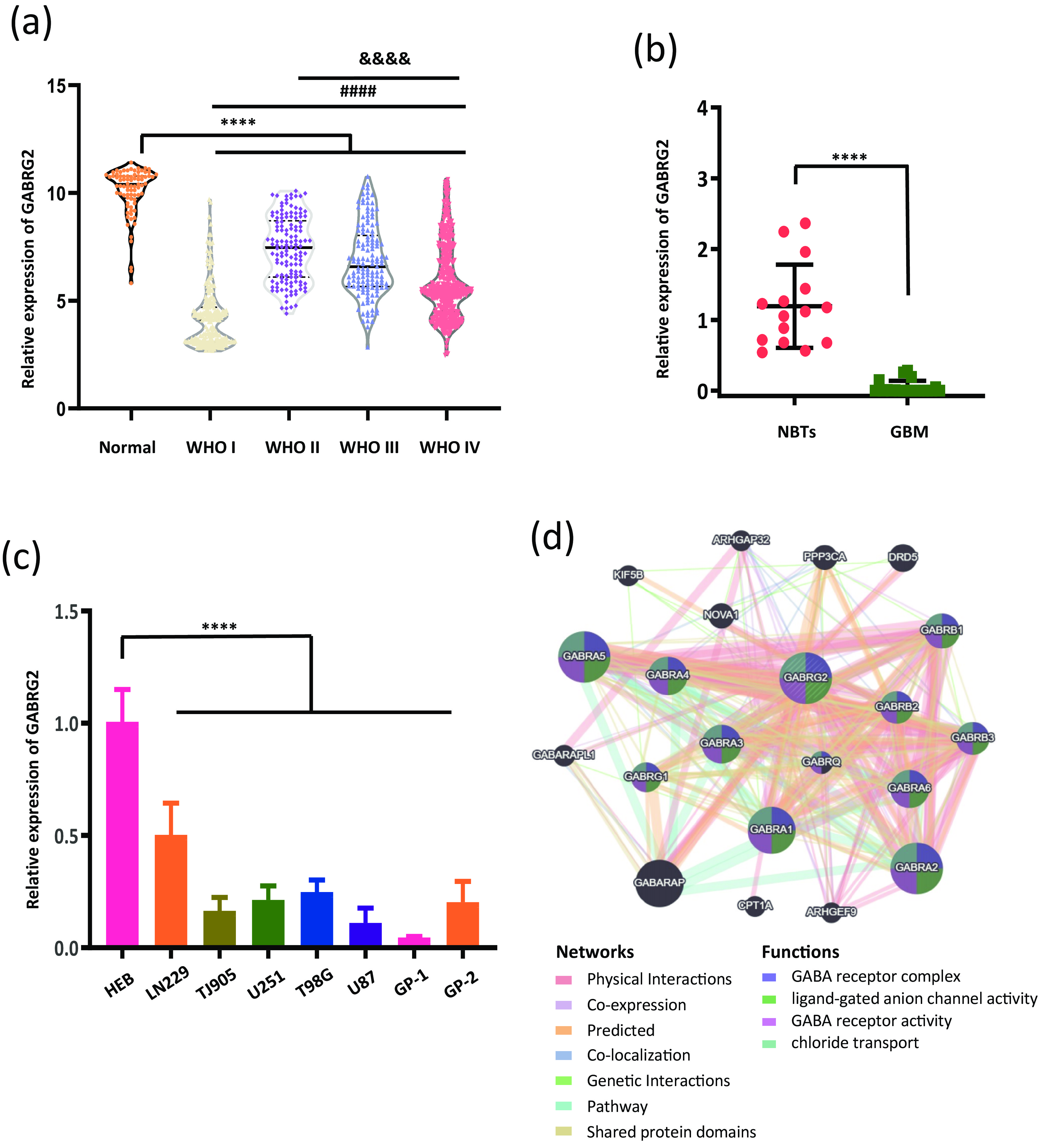PDF format
JUST-2022-0010 Supporting Information
Download(4902KB)JUST-2022-0010 Supporting Information
Figures of the Article
-
![]() Flowchart of data processing and DEG analysis.
Flowchart of data processing and DEG analysis.
-
![]() Identification of 74 mutual differentially expressed genes (DEGs) in 17 GSE datasets. (a) Volcano plot of glioma-related DEGs in datasets. (b) Venn diagrams of glioma-related DEGs in four groups. (c) Venn diagram of mutual DEGs in 17 datasets.
Identification of 74 mutual differentially expressed genes (DEGs) in 17 GSE datasets. (a) Volcano plot of glioma-related DEGs in datasets. (b) Venn diagrams of glioma-related DEGs in four groups. (c) Venn diagram of mutual DEGs in 17 datasets.
-
![]() Heat map of 74 mutual DEG expression in all samples.
Heat map of 74 mutual DEG expression in all samples.
-
![]() Functional enrichment analyses of mutual DEGs in 17 datasets. (a) Gene ontology (GO) biological process analysis of 74 mutual DEGs. (b) GO cellular component analysis of 74 mutual DEGs. (c) GO molecular function of 74 mutual DEGs. (d) Bubble chart shows the result of KEGG pathway analysis of 74 mutual DEGs. P < 0.05 was considered as statistically significant.
Functional enrichment analyses of mutual DEGs in 17 datasets. (a) Gene ontology (GO) biological process analysis of 74 mutual DEGs. (b) GO cellular component analysis of 74 mutual DEGs. (c) GO molecular function of 74 mutual DEGs. (d) Bubble chart shows the result of KEGG pathway analysis of 74 mutual DEGs. P < 0.05 was considered as statistically significant.
-
![]() Construction of protein-protein interaction (PPI) network and detection of key module. (a) PPI network of mutual DEGs in glioma. Circle size represents the significance of nodes in the network. (b) Core module of PPI network in glioma. (c) Results of functional enrichment analysis of core module in glioma performed using Metascape.
Construction of protein-protein interaction (PPI) network and detection of key module. (a) PPI network of mutual DEGs in glioma. Circle size represents the significance of nodes in the network. (b) Core module of PPI network in glioma. (c) Results of functional enrichment analysis of core module in glioma performed using Metascape.
-
![]() Identification and prognosis of hub genes in core module. (a) PPI network of ten hub DEGs in glioma. (b) Basic information of ten hub genes. The red-colored gene (GABRG2) indicates the highest degree of importance. (c) Prognosis of hub genes in glioma. P < 0.05 was considered as statistically significant.
Identification and prognosis of hub genes in core module. (a) PPI network of ten hub DEGs in glioma. (b) Basic information of ten hub genes. The red-colored gene (GABRG2) indicates the highest degree of importance. (c) Prognosis of hub genes in glioma. P < 0.05 was considered as statistically significant.
-
![]() Relative expression of GABRG2 and its potential molecular mechanism. (a) Relative expression of GABRG2 in 81 samples of normal brain tissue and 948 samples of glioma tissue (204 cases of WHO I, 134 cases of WHO II, 135 cases of WHO III, and 475 cases of WHO IV grade). (b) GABRG2 expression is downregulated in 20 glioma tissues compared with that in 15 normal brain tissues. (c) Relative expression of GABRG2 in glioma cell lines, primary cells, and HEB using qRT-PCR. (d) Potential molecular mechanisms of GABRG2 analyzed using GeneMANIA. ****P < 0.0001, ####P < 0.0001, &&&&P < 0.0001.
Relative expression of GABRG2 and its potential molecular mechanism. (a) Relative expression of GABRG2 in 81 samples of normal brain tissue and 948 samples of glioma tissue (204 cases of WHO I, 134 cases of WHO II, 135 cases of WHO III, and 475 cases of WHO IV grade). (b) GABRG2 expression is downregulated in 20 glioma tissues compared with that in 15 normal brain tissues. (c) Relative expression of GABRG2 in glioma cell lines, primary cells, and HEB using qRT-PCR. (d) Potential molecular mechanisms of GABRG2 analyzed using GeneMANIA. ****P < 0.0001, ####P < 0.0001, &&&&P < 0.0001.
Related articles
-
2024, 54(9): 0907. DOI: 10.52396/JUSTC-2024-0044
-
2022, 52(6): 2-1-2-12. DOI: 10.52396/JUSTC-2022-0027
-
2020, 50(4): 474-478. DOI: 10.3969/j.issn.0253-2778.2020.04.012
-
2018, 48(10): 838-841. DOI: 10.3969/j.issn.0253-2778.2018.10.010
-
2018, 48(7): 550-559. DOI: 10.3969/j.issn.0253-2778.2018.07.005
-
2017, 47(5): 377-384. DOI: 10.3969/j.issn.0253-2778.2017.05.002
-
2012, 42(4): 265-269. DOI: 10.3969/j.issn.0253-2778.2012.04.002
-
2008, 38(8): 923-929.
-
2008, 38(8): 909-922.
-
1990, 20(1-4): 1-704.











